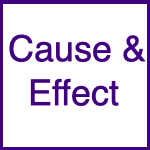These reading comprehension exercises will help you prepare for your exam. The answers and explanations are provided after each question. You will see your score when you have finished the quiz.

Reading comprehension exercises for your test
There are different types of reading comprehension questions on various standardized reading tests, and you will need different strategies to answer each one effectively.
Identifying the main idea, purpose, or emphasis

Pay special attention to the first and last paragraphs if you are asked to identify the main idea or purpose of the passage.
That is because the main points or purpose will be introduced and summed up in these paragraphs.
Example:
Organic farming has become one of the fastest growing trends in agriculture recently. Over the past ten years, sales of organic products in the United States have increased a staggering 20 percent, with retail sales per year of more than 9 billion dollars. American farmers have realized that organic farming is an incredibly cost-effective method because it can potentially be used to control costs, as well as to appeal to higher-priced markets. Apart from these monetary benefits, organic farming also results in positive ecological outcomes for the environment because the use of chemicals and synthetic materials is prohibited.
The main idea of the paragraph is that organic farming:
(A) is a very profitable sector of the agricultural industry.
(B) was less popular ten years ago.
(C) prohibits chemical and synthetic materials.
(D) has grown in popularity recently because it is cost-effective and environmentally-friendly.
The correct answer is D. The passage mentions both cost-effectiveness and benefits to the environment. In other words, answer D gives the main idea, but answers A, B, and C give specific information.
Cause and effect questions

The relationship of cause to effect in the passage can be determined by examining the general ideas or outcomes in the reading comprehension exercises and then identifying the specific events that caused them.
In order to do this, focus on sentences that use phrases like “because of” or “due to.”
Example:
Cancer occurs when cells in the body begin to divide abnormally and form more cells without control or order. There are some factors which are known to increase the risk of cancer. Smoking is the largest single cause of death from cancer in the United States. In addition, poor food choices increase cancer risk. Indeed, research shows that there is a definite link between the consumption of high-fat food and cancer.
From this passage, we can determine which of the following cause and effect relationships?
(A) a low-fat diet can reduce the risk of cancer.
(B) smoking usually causes cells to divide abnormally.
(C) the consumption of high-fat food has increased in recent years.
(D) most cancer sufferers have made poor food choices.
The correct answer is A. The passage states: “Indeed, research shows that there is a definite link between the consumption of high-fat food and cancer.” So, conversely, we can understand that a low-fat diet will decrease the chances of getting cancer. The other answers are not implied in the passage.
Understanding specific ideas

In order to understand specific ideas in reading comprehension exercises, you need to pay special attention to the sentence that contains the idea.
You may also need to read the sentences before and after the particular specific point in order to understand how the ideas are connected.
Example:
The Earth’s only natural satellite, the moon lacks its own atmosphere and is only about one-fourth the size of the planet it orbits. The equality of its orbital rate to that of the Earth is the result of gravitational locking, also known as synchronous rotation. Thus, the same hemisphere of the Moon always faces the earth. The brightest lunar surface areas are formed from meteoric material, while its dark surface regions, called mare basalts or basaltic plains, are the result of volcanic flooding related to impacts from asteroids.
For which of the following situations does the concept of synchronous rotation, as it is defined in the passage, provide the most likely explanation?
(A) The Moon goes through four phases every twenty-eight days.
(B) Two objects fall to the ground at the same speed and land at the same time.
(C) Stars appear to shine at the same intensity, regardless of their position in the sky.
(D) A telecommunications satellite always appears in the same position above a certain city on Earth.
The correct answer is D. The concept of synchronous rotation, as it is defined in the passage, provides the most likely explanation for the situation in which a telecommunications satellite always appears in the same position above a certain city on Earth. This is similar to the way in which the same hemisphere of the Moon always faces the earth.
Literary narratives

For reading comprehension exercises with excerpts from books or novels, you need to to understand the chronological sequence of events. This is because, these events will be mentioned in a non-chronological order.
These types of passages will often include reading comprehension exercises on word reference as well.
Example:
One of those sprawling flamboyant patterns committing every artistic sin. It is dull enough to confuse the eye in following, pronounced enough to constantly irritate and provoke study, and when you follow the lame uncertain curves for a little distance they suddenly commit suicide—plunge off at outrageous angles, destroy themselves in unheard of contradictions.
When the narrator uses the word “it” in paragraph 1, she is referring to:
(A) the room.
(B) the baby.
(C) the wallpaper.
(D) the heavy bedstead.
The correct answer is C. We know that the narrator is talking about the wallpaper because she is describing the patterns on the paper. She then goes on to talk about the wallpaper in the majority of the passage.
Vocabulary

There may be reading comprehension exercises on understanding the meaning of words in the passage.You may already know the meaning of the word or it may be new to you.
For these questions, look for synonyms for the word or phrase in the question.
Example:
For me, it is important to try to avoid processed or convenience food. Packaged food often contains chemicals, such as additives to enhance the color of the food or preservatives that give the food a longer life. Food additives are deleterious to health for a number of reasons. First of all, they may be linked to disease in the long term. In addition, they may block the body’s ability to absorb the essential vitamins and minerals from food that are required for healthy bodily function.
Which of the following words is closest in meaning to the word “deleterious” as it is used in the passage ?
(A) insipid
(B) harmful
(C) impeding
(D) provoking
The correct answer is B. We know that the word “deleterious” has a negative connotation because the passage is talking about disease at this point, so “harmful” is the best synonym.
Inference questions

For these types of questions, use inductive reasoning to make generalizations from the specific points in the text.
So, first analyze the specific points. Then try to generalize why these specific events took place.
Pay special attention words like “may,” “might” or “could” in texts like this.
Example:
Two original forms of theater have emerged from Japanese culture: Noh and Kabuki. Noh, the older form, was originally established to meet the demands of the “discriminating Japanese aristocracy” and remained “unchanged for more than six centuries.” Noh renders mundane, everyday activities, like drinking tea or arranging flowers, into exquisite artistic performances. Consisting of minimal spectacle, bare stage designs, and little spoken dialogue, Noh is classified as more ritual than drama.
The use of quoted material in the passage suggests which of the following about followers of Noh?
(A) They lament the fact that Noh clings on to outdated customs of the past.
(B) They believe that Kabuki theater is overtly flamboyant.
(C) They fear that the popularity of Kabuki theater may diminish the appeal of Noh.
(D) The followers of Noh are traditional, discerning, and serious.
The correct answer is D. The use of quotation marks in the passage suggests that followers of Noh are traditional, discerning, and serious. Paragraph 1 uses quotation marks when it states that Noh is for the “discriminating Japanese aristocracy” and that it depicts a “solemn act.” The word “aristocracy” implies that the dance is traditional in nature. “Discriminating” means “discerning,” and “solemn” means “serious.”
Style and tone

These questions ask you to examine the author’s intention, tone, emphasis, or audience.
If the word “you” is used repeatedly, the author’s tone is informal. On the other hand, if the text contains high-level vocabulary, the purpose will usually be an academic one.
Good nutrition is essential for good health. A healthy diet can help a person to maintain a good body weight, promote mental wellbeing, and reduce the risk of disease. So, you might ask, what does good nutrition consist of? Well, in my opinion, a healthy diet should include food from all of the major food groups. These food groups are carbohydrates, fruit, vegetables, dairy products, meat and other proteins, and fats and oils.
The tone and style of this passage most probably indicate that it both would be suitable for which of the following audiences?
A. Adults listening to a radio program on nutrition
B. Medical doctors attending a seminar
C. Participants in a weight-loss support group
D. College students in a biology lecture
The correct answer is A. The audience is most likely to be adults listening to a radio program on nutrition. The passage has a conversational tone, beginning sentences with words like “so” and “well.”
Comparison questions

Focus on adjectives and other descriptive phrases if you are asked to make comparisons within a text.
On some exams, you may have to compare the information expressed in two different passages. Again, you should pay attention to adjectives and descriptive phrases in the passages.
More reading comprehension exercises
Monroe College – Free Reading Exercises PDF
Birmingham School – Vocabulary Improvement Questions PDF
Help with English Language Skills
If you need to practice your grammar or essay writing skills, why not have a look at our other exercises?